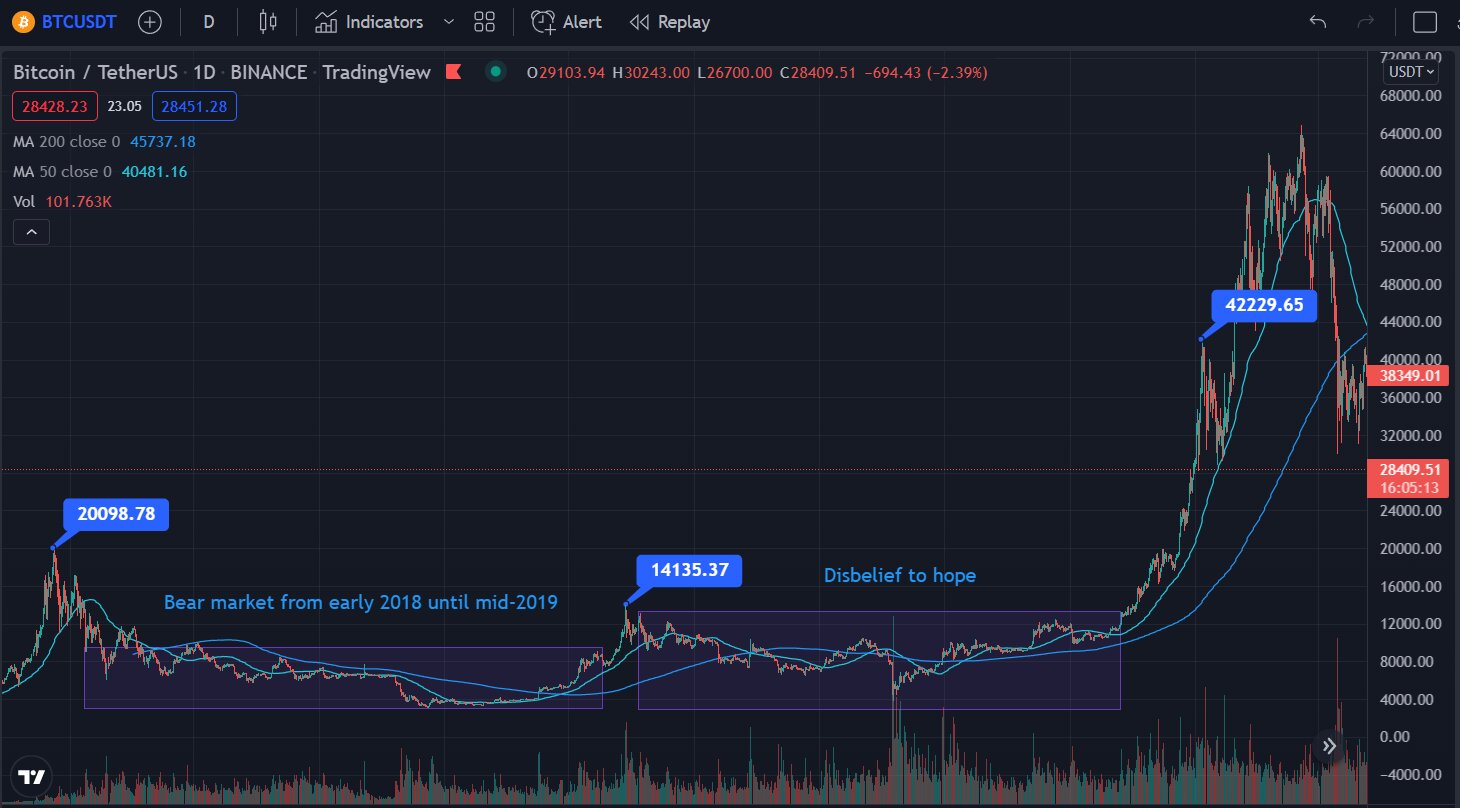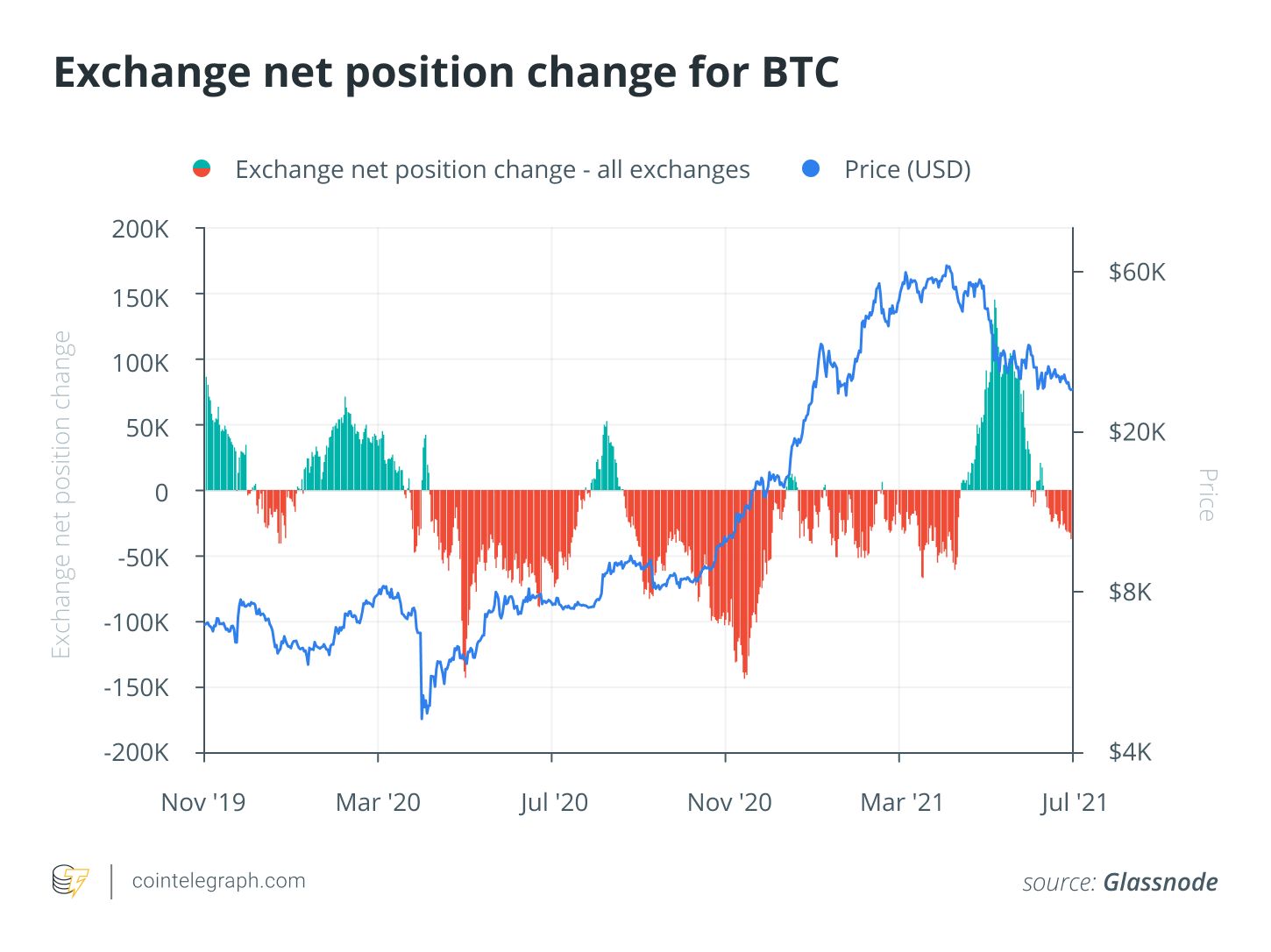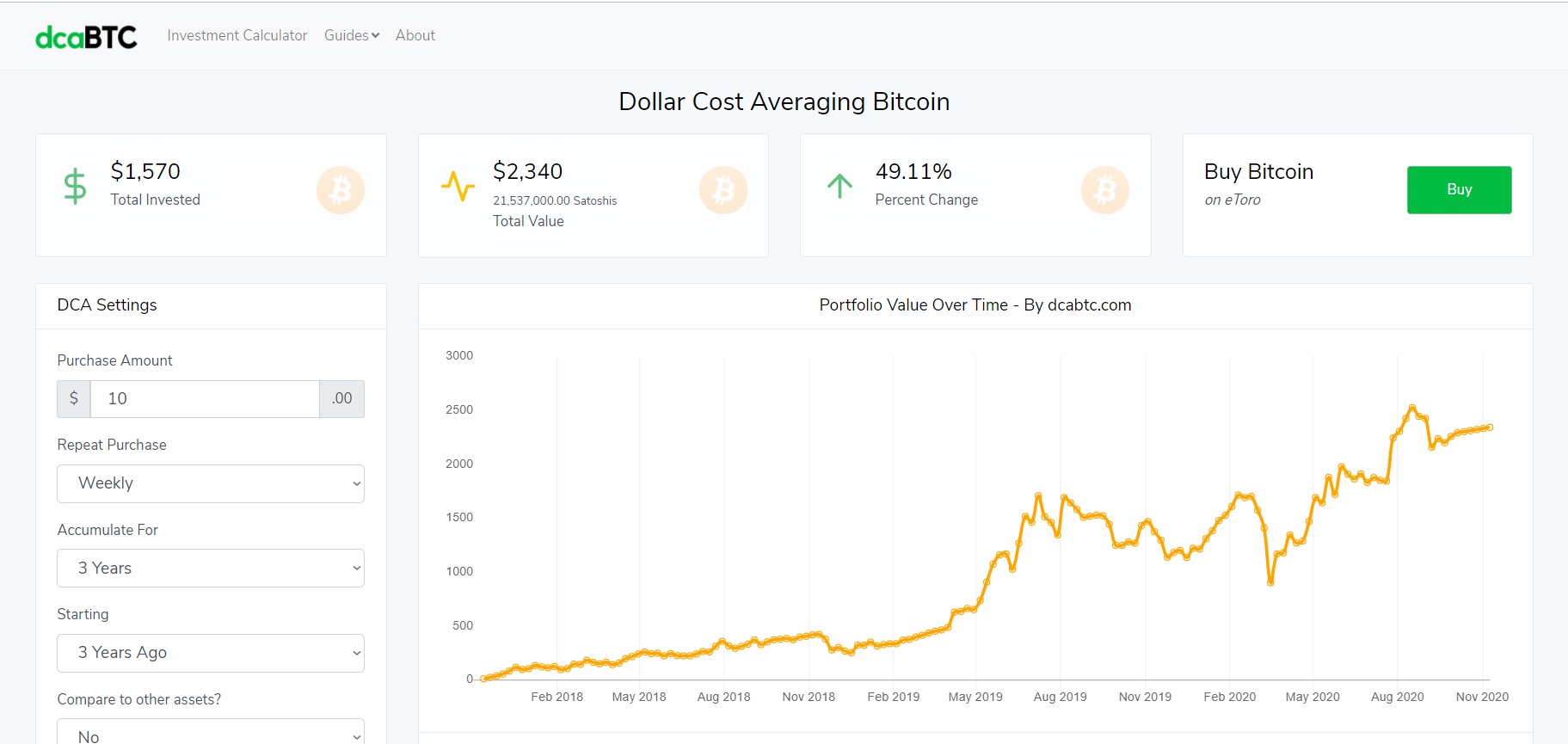Introduction
Welcome to the world of cryptocurrency, where the market’s ups and downs create waves of excitement and anxiety for investors and enthusiasts alike. Over the past years, the crypto market has experienced significant volatility, with periods of surging prices followed by sharp declines. These downward trends are known as bear markets, and they often leave investors wondering when the storm will finally pass, and the sun will shine on their portfolios once again.
A bear market in crypto refers to a prolonged period of declining prices and pessimism among investors. It is characterized by a general lack of confidence in the market, leading to selling pressure and further price drops. Unlike bull markets, which are marked by optimism and a rise in prices, bear markets can be challenging to navigate and can last for months or even years.
The current bear market in crypto, which began in early 2018, has been a challenging period for both seasoned investors and newcomers. The prices of major cryptocurrencies, such as Bitcoin and Ethereum, have experienced substantial declines, resulting in significant losses for many. Though the bear market can feel disheartening, it’s important to understand the factors contributing to its longevity in order to anticipate when it may finally come to an end.
In this article, we will explore the dynamics of a bear market in crypto, examine the factors that have contributed to the current market downturn, and discuss various signs that indicate the end of the bear market may be approaching. We will also delve into expert opinions on the matter and provide strategies for navigating the bear market landscape.
So, if you’ve found yourself questioning when the bear market will end, and if it’s the right time to invest or hold on to your current holdings, read on. Understanding the nature of bear markets and having insights into the signs of a turnaround can help you make informed decisions and position yourself for potential future gains in the crypto market.
What is a Bear Market?
In the realm of finance, a bear market refers to a sustained period of falling prices in a market, such as stocks, bonds, or cryptocurrencies. In the context of cryptocurrency, a bear market occurs when the prices of major digital currencies experience a significant and prolonged decline, often accompanied by a general sense of pessimism among investors.
A bear market can be quite different from a bull market, which is characterized by rising prices and a positive sentiment in the market. During a bear market, investor confidence tends to wane, leading to a sell-off of assets and further downward pressure on prices.
One key feature of a bear market is the prevalence of market negativity, where investors expect further price declines and are hesitant to enter or accumulate more positions. This pessimistic sentiment can become self-perpetuating, as more sellers enter the market, creating a downward spiral in prices.
The duration of a bear market can vary widely, ranging from a few months to several years. During this period, prices can experience sharp declines, retracements, and occasional temporary rallies. However, the overall trend remains downwards.
For investors and traders, navigating a bear market can be challenging. The priority shifts from finding opportunities to capitalize on price appreciation to managing potential losses and mitigating risk. In such market conditions, it becomes crucial to adopt strategies that focus on preserving capital, such as taking profits on rallies, diversifying holdings, and implementing strict risk management protocols.
While a bear market can test the patience and resolve of investors, it’s important to remember that market cycles are a natural part of any financial market. Just as bull markets give way to bear markets, bear markets eventually give way to new bull markets, providing fresh opportunities for growth and profitability.
Understanding the nature of bear markets and their characteristics is essential for investors in the cryptocurrency market. By recognizing the signs and trends associated with bear markets, investors can better anticipate market movements and adjust their investment strategies accordingly.
Factors contributing to the current bear market in crypto
The current bear market in cryptocurrency has been influenced by a combination of factors that have contributed to the prolonged state of declining prices and investor uncertainty. Understanding these factors can provide insight into the current market conditions and potentially shed light on when the bear market may come to an end.
1. Regulatory Uncertainty: One significant factor impacting the crypto market is the regulatory landscape. Governments around the world have been grappling with how to regulate cryptocurrencies, which has led to uncertainty and occasional crackdowns on exchanges and initial coin offerings (ICOs). This regulatory ambiguity has made investors hesitant and has created a sense of instability in the market.
2. Market Manipulation: The crypto market’s relatively small size and lack of oversight have made it susceptible to manipulation. Reports of market manipulation, such as pump and dump schemes and the use of trading bots, have eroded investor confidence and contributed to the downward pressure on prices.
3. Security Concerns: Despite advancements in security measures, the risk of hacks and theft in the crypto space remains a concern. High-profile hacking incidents, such as the Mt. Gox and Coincheck hacks, have not only resulted in substantial losses for investors but have also shaken market confidence and fueled negative sentiment.
4. Market Correction: The rapid rise in cryptocurrency prices during the bull market of 2017 was met with skepticism by many market observers. As a result, a market correction was inevitable. The sharp decline in prices following the highs of late 2017 was a natural adjustment to the inflated valuations, as market forces sought to find a more sustainable equilibrium.
5. Lack of Institutional Adoption: While some institutions have started to explore and invest in cryptocurrencies, the overall adoption by traditional financial institutions has been relatively slow. The absence of major institutional players entering the market has limited the inflow of institutional capital, which could have provided stability and contributed to market growth.
6. Market Sentiment: Investor sentiment plays a crucial role in market dynamics. During a bear market, negative sentiment and fear can create a self-fulfilling prophecy, as investors sell off their holdings, further driving down prices. The prevalence of negative news coverage and the constant focus on price declines can amplify the bearish sentiment in the market.
It’s important to note that these factors are not exclusive to the cryptocurrency market and can be observed in other financial markets during bearish periods. While they have contributed to the current bear market in crypto, they are not definitive in predicting the exact end of the market downturn.
Understanding these factors can help investors make more informed decisions, but it’s essential to conduct thorough research and seek advice from reputable sources before making any investment choices in the crypto market.
Historical bear markets in crypto
The cryptocurrency market has experienced several bear markets throughout its relatively short history. These bear markets have been significant periods of price declines and market pessimism. It is important to study these historical bear markets to gain insights into the cyclical nature of the crypto market and understand how previous downturns have eventually led to new opportunities for growth.
1. The 2011 Bear Market: The first major bear market in the crypto space occurred in 2011 when Bitcoin experienced a significant price drop. This bear market was largely attributed to the hacking of the Mt. Gox exchange, which resulted in the loss of millions of dollars’ worth of Bitcoin. The market saw a decline in confidence and a subsequent drop in prices, with Bitcoin losing over 93% of its value.
2. The 2013-2015 Bear Market: Following the sharp rise of Bitcoin’s price in 2013, the crypto market entered into a prolonged bear market that lasted until early 2015. This bear market was characterized by multiple factors, including the collapse of the Mt. Gox exchange, regulatory uncertainty, and a general lack of understanding and acceptance of cryptocurrencies. Bitcoin’s price plummeted by more than 80% during this period.
3. The 2018-Present Bear Market: The current bear market, which began in early 2018, has been one of the longest and most challenging for crypto investors. After reaching all-time highs in late 2017, major cryptocurrencies experienced a significant decline in prices, with Bitcoin losing over 80% of its value. This bear market has been influenced by regulatory concerns, market manipulation, and the bursting of the speculative bubble that formed during the bull market of 2017.
While bear markets can be disheartening, it is important to note that they have always been followed by new bullish periods in the past. After each historical bear market, the crypto market has rebounded and reached new heights, attracting renewed interest and investment.
Additionally, it is interesting to observe how the duration and intensity of bear markets have varied. Some bear markets have been relatively short-lived, lasting only a few months, while others have persisted for several years. However, the eventual recovery and return to a bullish market have remained consistent throughout history.
These historical bear markets serve as a reminder that the crypto market is characterized by cycles of volatility. Investors who have been able to weather the storm and hold onto their positions during bear markets have often been rewarded by the subsequent periods of growth and new all-time highs.
Understanding the historical context of bear markets in crypto can help investors gain a broader perspective and adopt a long-term mindset when navigating the current downturn.
Signs that the current bear market may be ending
While it is challenging to predict the exact timing and duration of bear markets, there are several signs and indicators that can suggest when a bear market in the crypto space may be coming to an end. These signals, when considered in conjunction with other market factors, can provide insight into a potential turnaround and the start of a new bullish period.
1. Stabilization of Prices: One of the first signs that a bear market may be ending is a stabilization of cryptocurrency prices. Instead of experiencing significant and frequent price drops, prices may begin to level off and show more consistent fluctuations. This stability can indicate that sellers are becoming exhausted, and the market is reaching a point of equilibrium.
2. Decrease in Selling Pressure: During a bear market, the overall sentiment is often marked by selling pressure as investors try to minimize their losses. As the bear market approaches its end, this selling pressure may begin to subside. Investors who want to exit their positions have already sold, and buyers start to enter the market, absorbing the selling pressure.
3. Increasing Trading Volume: A significant increase in trading volume can be a sign that market participants are becoming more active and engaged. Higher trading volumes indicate increased interest and potentially a shift in market sentiment. This increased participation can indicate the start of a new upward trend.
4. Positive News and Developments: Positive news and announcements within the crypto space can have a significant impact on market sentiment. If there is a stream of positive news, such as new partnerships, regulatory clarity, or major developments in blockchain technology, it can contribute to a change in investor sentiment and indicate that the bear market may be coming to an end.
5. Technical Analysis: Traders often rely on technical analysis to identify trend reversals. Chart patterns, such as higher lows and higher highs, can signal a shift from a bearish to a bullish trend. Additionally, indicators like moving averages, trendlines, and the relative strength index (RSI) can provide insights into potential trend reversals.
It is important to note that these signs are not foolproof indicators and should be considered alongside other market factors and expert opinions. Timing the market is notoriously difficult, and it is always wise to approach investments with caution and thorough research.
Investors should also understand that the transition from a bear market to a bull market is often gradual. It may take time for confidence and positive sentiment to fully return to the market. Thus, patience and a long-term view are crucial when navigating the end of a bear market and positioning oneself for potential future growth.
Expert opinions on the end of the bear market in crypto
As the crypto market continues to navigate through the current bear market, experts and industry analysts have shared their opinions regarding when the bear market may come to an end. While opinions vary, these insights can provide valuable perspectives on the potential timing and factors that may contribute to the transition from a bear market to a bullish period.
1. Long-Term Market Cycles: Many experts emphasize the cyclical nature of the crypto market and believe that bear markets are a natural part of these cycles. They argue that, historically, bear markets have been followed by periods of significant growth, indicating that the current bear market will eventually come to an end, leading to a new bullish market.
2. Regulatory Clarity: Some experts suggest that regulatory clarity could play a significant role in signaling the end of the bear market. As governments and regulatory bodies around the world develop clear guidelines for cryptocurrencies, it is believed that it will help to stabilize the market and boost investor confidence, potentially leading to a reversal in the bearish trend.
3. Technical Analysis: Technical analysts focus on chart patterns and indicators to predict market trends. Some experts utilize technical analysis to identify potential trend reversals and the end of the bear market. They look for key levels of support and resistance, bullish crossover signals, and positive divergences on technical indicators as indications that the bear market may be coming to a close.
4. Institutional Involvement: Many experts believe that increased involvement and adoption from institutional investors could trigger the end of the bear market. They point to the growing interest from institutional players, such as hedge funds, asset managers, and major financial institutions, as a positive sign. The influx of institutional capital and legitimacy could help stabilize the market and bring about a shift in sentiment.
5. Market Sentiment: Market sentiment, often influenced by news, events, and overall market perception, is a factor highlighted by experts. Positive developments, such as regulatory advancements, large corporations adopting blockchain technology, or increased public awareness and understanding of cryptocurrencies, could shift sentiment and herald the end of the bear market.
It is worth noting that expert opinions are subjective and should be considered alongside other market factors and individual research. While their insights provide valuable perspectives, the crypto market is inherently unpredictable, and it is challenging to pinpoint an exact timeframe for the end of a bear market.
Ultimately, each investor should conduct their own due diligence and make informed decisions based on their risk tolerance, investment objectives, and understanding of the crypto market. By staying informed and monitoring key indicators, investors can position themselves for potential future growth as the bear market eventually transitions to a new bullish phase.
Strategies for navigating the bear market
Navigating the bear market in the cryptocurrency space requires a different approach compared to a bull market. While the bear market can be challenging, there are strategies that investors can employ to mitigate risks and potentially capitalize on opportunities. Here are some strategies to consider:
1. Diversify your portfolio: In a bear market, diversification becomes even more crucial. Spreading your investments across different cryptocurrencies and even other asset classes can help reduce risk. By diversifying, you can protect your portfolio from the impact of a single coin or sector experiencing significant declines.
2. Take profits on rallies: During a bear market, it’s essential to seize opportunities when they arise. If you notice a temporary rally or an upward price movement, consider taking some profits off the table. Selling a portion of your holdings can help secure gains and provide liquidity for future investment opportunities.
3. Maintain a long-term perspective: It’s crucial to remember that bear markets are part of the natural cycle of the crypto market. Instead of focusing on short-term price fluctuations, take a long-term view. Many experts believe that the bear market will eventually end, and new growth opportunities will arise. Stay patient and remain committed to your investment strategy.
4. Dollar-cost averaging: Dollar-cost averaging is a strategy where you consistently invest a fixed amount of money into cryptocurrencies at regular intervals, regardless of the market conditions. This approach allows you to buy more when prices are low and fewer when prices are high, ultimately averaging out your cost over time.
5. Keep track of fundamental analysis: As the market goes through its cycles, it’s crucial to stay updated on the fundamental aspects of the cryptocurrencies you’re interested in. Monitor project developments, partnerships, product launches, and adoption trends. Fundamental analysis can help you identify the projects with real value and potential for long-term success.
6. Embrace risk management: A bear market requires a focus on risk management. Set clear risk tolerance levels and establish stop-loss orders to limit potential losses. Implementing proper risk management strategies can help protect your capital and avoid significant financial setbacks.
7. Educate yourself and stay informed: The cryptocurrency market is constantly evolving, and staying informed is key. Keep up with industry news, follow reputable crypto influencers and analysts, and join communities where you can discuss and share insights with like-minded individuals. Educate yourself about the market dynamics and adopt a data-driven approach to decision-making.
Remember, these strategies do not guarantee profits or the timing of the bear market’s end. However, they can help you navigate the market with a cautious and informed approach. It’s also essential to adapt and refine your strategies based on changing market conditions and your own risk appetite.
Conclusion
The current bear market in the cryptocurrency space has presented investors with significant challenges and uncertainty. However, it is important to remember that bear markets are a natural part of market cycles, and they provide opportunities for growth and new investment prospects.
Throughout this article, we have explored what a bear market is and discussed the factors contributing to the current market downturn. We have also examined historical bear markets, signs that indicate the end of the bear market may be approaching, expert opinions on the matter, and strategies for navigating the bear market.
While it is difficult to predict the exact timing for the end of the bear market, understanding the dynamics of the market, staying informed, and adopting strategies that align with your investment goals and risk tolerance can help you navigate through this challenging period.
Remember to diversify your portfolio, take profits on rallies, maintain a long-term perspective, and embrace risk management. Stay updated on news and developments in the crypto space, and educate yourself about the fundamental aspects of the cryptocurrencies you invest in.
It’s essential to approach the bear market with caution, patience, and resilience. By staying focused on long-term goals and adapting your investment strategies based on market dynamics, you position yourself for potential growth when the bear market eventually gives way to a new bullish period.
The crypto market is known for its volatility, and while it may seem daunting at times, it also presents unique opportunities for those who are willing to navigate through the ups and downs. Keep a forward-thinking mindset and remain optimistic about the future of cryptocurrencies as technology continues to evolve and mainstream adoption expands.
As with any investment, conducting thorough research, seeking expert advice, and making informed decisions based on your own financial situation and risk appetite are critical. By doing so, you can navigate the bear market with confidence and position yourself for potential success in the evolving world of cryptocurrencies.

























